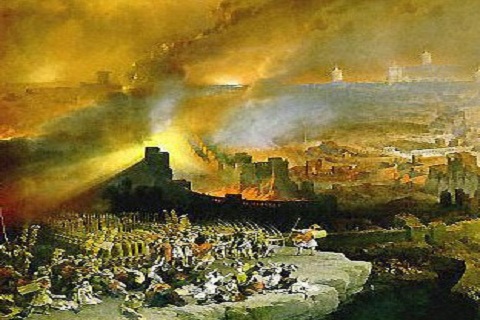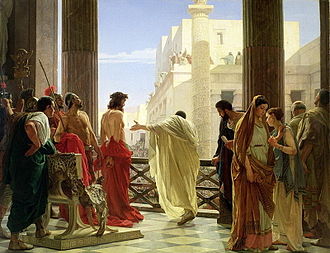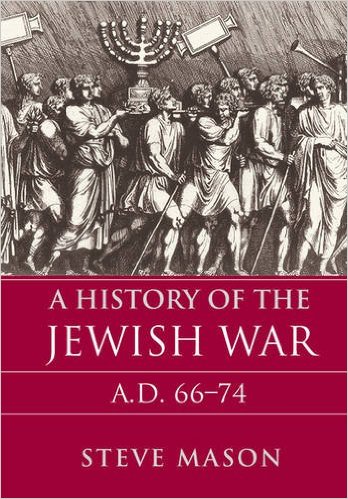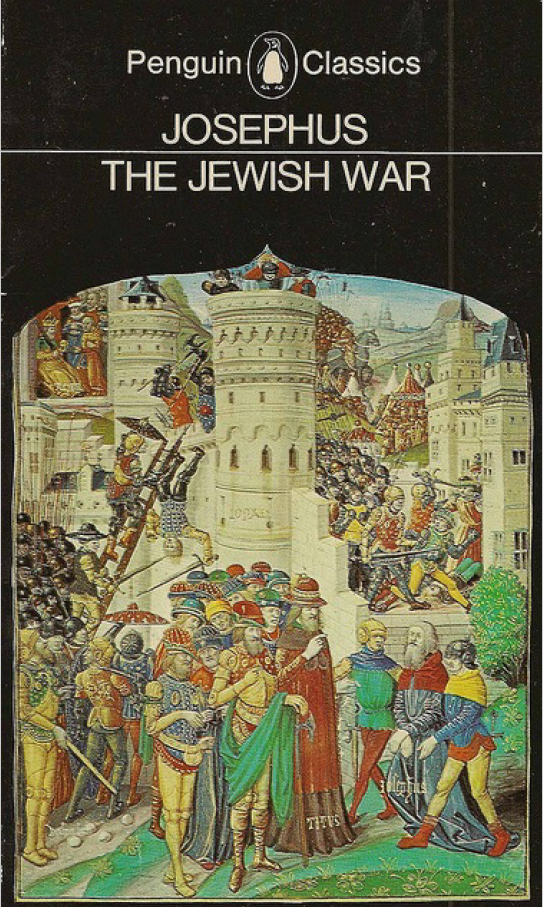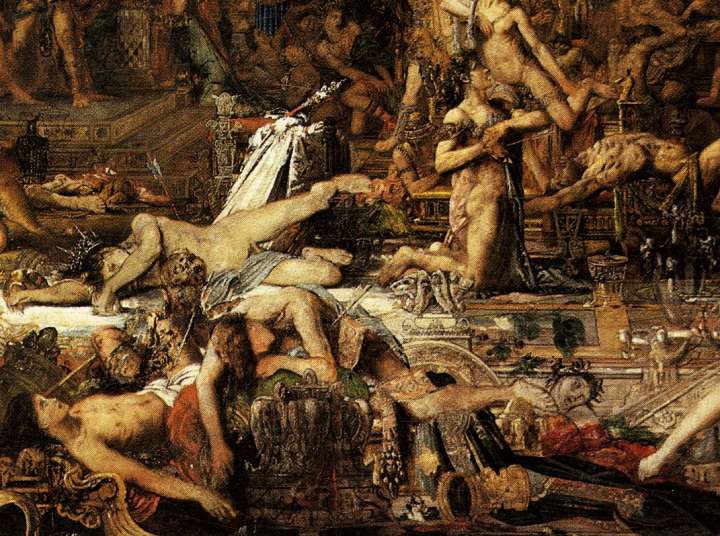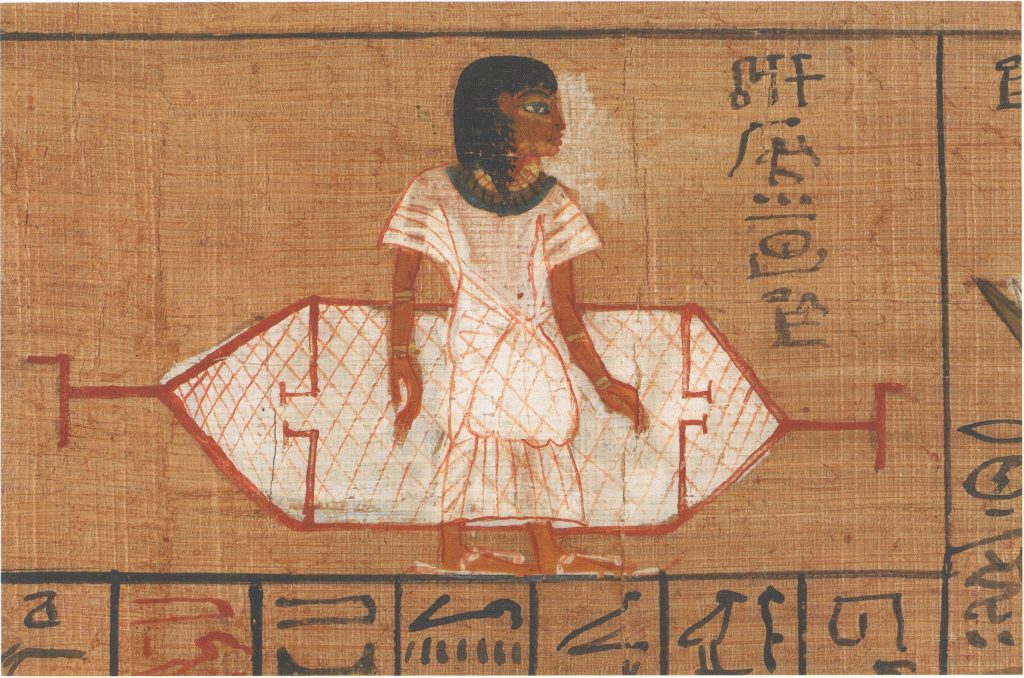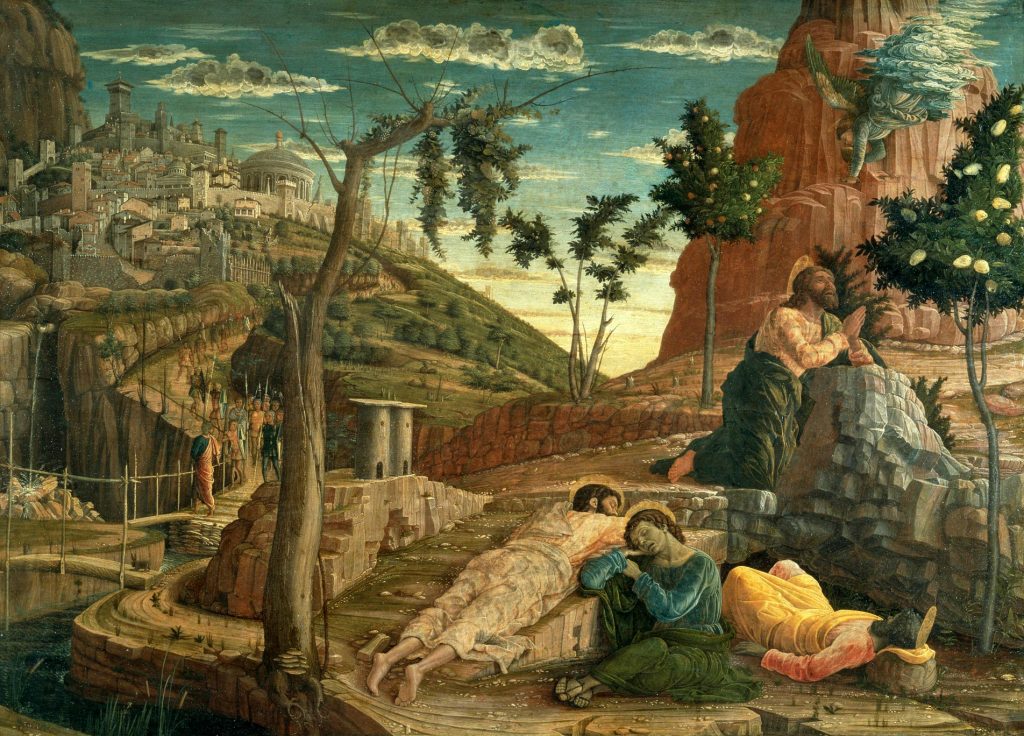 An email update this morning informs me that linguist Paul Hopper has uploaded to his academia.edu page another copy of his earlier paper, A Narrative Anomaly in Josephus: Jewish Antiquities xviii:631, that was published in 2014 in Linguisitics and Literary Studies. There is now a new link to the paper. The paper is a few years old now and I’ve posted about it before but no matter at all: the email notice this morning gives me another opportunity to bring it to the attention of readers not aware of it.
An email update this morning informs me that linguist Paul Hopper has uploaded to his academia.edu page another copy of his earlier paper, A Narrative Anomaly in Josephus: Jewish Antiquities xviii:631, that was published in 2014 in Linguisitics and Literary Studies. There is now a new link to the paper. The paper is a few years old now and I’ve posted about it before but no matter at all: the email notice this morning gives me another opportunity to bring it to the attention of readers not aware of it.
In my previous post, Fresh Evidence: The Forged Jesus Passage in Josephus, I quoted the abstract and conclusion of Paul Hopper’s paper. Here I quote a few lines on different aspects in the body of the paper.
After a detailed discussion of verbal forms in the Testimonium Flavianum passage compared with those in the adjacent Pilate episodes we move to a discussion of the “macrolevel” of narrative structure. (I have added bolding to and changed some of the layout of the original text.)
The Aquifer episode
But Pilate undertook to bring a current of water to Jerusalem, and did it with the sacred money, and derived the origin of the stream from the distance of two hundred furlongs. However, the Jews were not pleased with what had been done about this water; and many ten thousands of the people got together, and made a clamor against him, and insisted that he should leave off that design. Some of them also used reproaches, and abused the man, as crowds of such people usually do. So he habited a great number of his soldiers in their habit, who carried daggers under their garments, and sent them to a place where they might surround them. So he bid the Jews himself go away; but they boldly casting reproaches upon him, he gave the soldiers that signal which had been beforehand agreed on; who laid upon them much greater blows than Pilate had commanded them, and equally punished those that were tumultuous, and those that were not; nor did they spare them in the least: and since the people were unarmed, and were caught by men prepared for what they were about, there were a great number of them slain by this means, and others of them ran away wounded. And thus an end was put to this sedition. — Antiquities, 18, 3, 2.
The time organization in the Testimonium is strikingly different from that of the surrounding text. For example, the narrative of the Aquifer [see box right] is filled with particular details –
the rioters shouting insults,
the Roman soldiers going among the crowd in Jewish dress,
the order to the demonstrators to disperse,
the overreaction of the soldiers,
and the bloody suppression of the riot.
At each point we know not only what the actors did, but why they did it, and what the causes and effects of their actions were. The Aquifer episode, like the other episodes involving Pontius Pilate, has an event structure. Time in these episodes is kairotic, that is, it is qualitative time (kairos) experienced by individual actors.9 . . . .
By contrast, the temporality of the Testimonium is chronic (chronos), that is, it is part of the general temporality of human history. It takes place in a more remote perspective of slow changes and general truths; it is temps conjoncturel, the time of social movements and social reorganization. It has a bird’s-eye view of its subject, scanning the entire life of Jesus and his influence in no particular order, anachronistically (Genette 1980:34). . . . . So the Testimonium belongs to a different kind of time from the rest of the Jewish Antiquities. The temporality of the Testimonium derives from its presumed familiarity to its audience, which in turn is more compatible with a third century or later Christian setting than a first century Roman one. . . . .
The next point is a comparison of the Testimonium‘s “emplotment” with the preceding Pilate episodes.
The Aquifer story is a narration in which a situation is established and the characters interact, and there is a resolution. It has a plot in the way that recent narrative theorists have stipulated. . . . The same is true of the other two Pilate episodes. . . . . The careful crafting of emplotment is an essential part of Josephus’s skill as a historian.
The Testimonium has no such plot. From the point of view of its place in Josephus’s Jewish Antiquities, it does not qualify as a narrative at all. The Testimonium could not be understood as a story except by someone who could already place it in its “intelligible whole”, the context of early Christianity. The Testimonium gains its intelligibility not through its reporting of novel events but by virtue of being a “repetition of the familiar” (Ricoeur 1981:67) – familiarity here meaning familiarity to a third century Christian readership, not to a first century Roman one.The “intelligible whole” posited by Ricoeur as the indispensable foundation for a story does not lie, as it does for the other events told by Josephus in this part of the Jewish Antiquities, in the larger narrative of the interlocking destinies of Rome and Jerusalem, but instead in the Gospel story of the Christian New Testament, and it is from the Gospels, and the Gospels alone, that the Jesus Christ narrative in the Testimonium draws its coherence and its legitimacy as a plot, and perhaps even some of its language. It is not just that the Christian origin of the Testimonium is betrayed by its allegiance to the Gospels, as that without the Gospels the passage is incomprehensible. Once again to draw on Paul Ricoeur, the Testimonium does not so much narrate to first century Romans new events, but rather reminds third century Christians of events already familiar to them.
And then a look at genre, and a comparison between the TF and credal formulas vis a vis the historical narrative of Josephus.
The Testimonium is anchored in a radically different discourse community from that of the rest of the Jewish Antiquities. The Testimonium reads more like a position paper, a party manifesto, than a narrative. Unlike the rest of the Jewish Antiquities, it has the same generic ambiguity between myth and history that Kermode (1979) has noted in the Gospels as a whole. . . . . It is, in other words, a political interpolation. It serves to validate the Christian claim of the crucifixion of the sect’s founder during Pilate’s administration, and, by positioning its text within that of the genre “history”, with its ethos of truth, to warrant the historical authenticity of the Gospels. But told as a series of new events to a first century Roman audience unfamiliar with it, the Testimonium would have been a bizarre addition and probably quite unintelligible.
The Testimonium Flavianum
Now there was about this time Jesus, a wise man, if it be lawful to call him a man; for he was a doer of wonderful works, a teacher of such men as receive the truth with pleasure. He drew over to him both many of the Jews and many of the Gentiles. He was [the] Christ. And when Pilate, at the suggestion of the principal men amongst us, had condemned him to the cross, (9) those that loved him at the first did not forsake him; for he appeared to them alive again the third day; (10) as the divine prophets had foretold these and ten thousand other wonderful things concerning him. And the tribe of Christians, so named from him, are not extinct at this day. — Antiquities, 18, 3, 3.
The Testimonium Flavianum qualifies poorly as an example of either history or narrative. Where, then, does it fit generically? The closest generic match for the Testimonium is perhaps the various creeds that began to be formulated in the early fourth century, such as the Nicene Creed (325 CE).10 Some credal elements are clearly present:
Jesus was the Messiah;
he was crucified under Pontius Pilate (passus sub Pontio Pilato, in the words of the Apostles’ Creed);
he came back to life on the third day after his death;
the movement founded by him – the Christian church – continues to flourish;
he performed miracles;
the biblical prophets foretold many details of his life.
Less specifically credal, but similar in character to the creeds, are its length (77 Greek words, comparable to the 76 words of the Latin Apostles’ Creed and the 91 words of the Greek Apostles’ Creed)11 and the sycophantic tone of the confirmed believer (“had a following among both Jews and Gentiles”, “appeared to them alive after the third day”, “the biblical prophets foretold his many miracles”). The unmotivated introduction of Jesus immediately after the openingginetai (“there happened”) is also structurally reminiscent of credal formulas such as credo in unum deum etc.
. . . . . . The Testimonium reflects what had by the third century CE become a commonplace of Christianity: that culpability for the death of Jesus rested with the Jews.12 It is made clear in the Testimonium that Pilate’s agency is indirect: the true agents are “the first men among us”, the Jewish leaders who effect the “indictment” of Jesus, Pilate’s role being limited to pronouncing the death sentence. The “among us” is unequivocal: responsibility for the death of Jesus lies with Josephus’s fellow-countrymen, the Jews, not with the Romans, and in this too the Testimonium is hard to reconcile with Josephus’s denunciation of Pilate’s crimes against the Jews. The Josephus of the Testimonium is represented as aligning himself with the Christians (versus the Jews) and admitting that the blame for the crucifixion of Jesus the Messiah lies with the Jews; it need hardly be said that such an admission on Josephus’s part is inconceivable.
But the above is taken from only the last three pages of Paul Hopper’s twenty plus page article. See the link below to download the paper or read it online.
Hopper, Paul. 2014. “A Narrative Anomaly in Josephus: Jewish Antiquities xviii:63.” In Linguistics and Literary Studies / Linguistik und Literaturwissenschaft, edited by Monika Fludernik and Daniel Jacob, Bilingual edition, 147–69. Linguae & Litterae, Book 31. Berlin ; Boston: De Gruyter. https://www.academia.edu/37321029/A_Narrative_Anomaly_in_Josephus_Jewish_Antiquities_xviii_63.
Like this:
Like Loading...
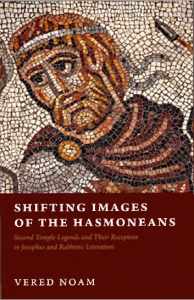 Of special interest to many readers are questions over the authenticity of passages about Jesus and John the Baptist in Josephus’s Antiquities.
Of special interest to many readers are questions over the authenticity of passages about Jesus and John the Baptist in Josephus’s Antiquities.
